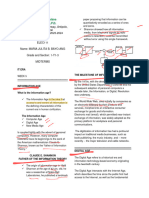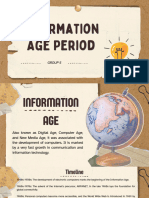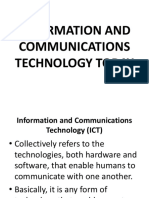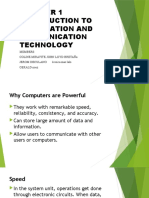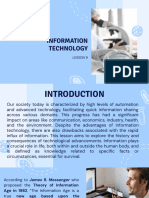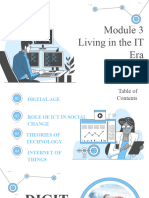0% found this document useful (0 votes)
123 views29 pagesInformation Age
The Information Age began in the mid-20th century and is characterized by a shift from an industrial economy to one based on information technology. Key developments included the invention of the computer, Claude Shannon's work establishing information theory, the rise of personal computers in the 1980s, the creation of the Internet and World Wide Web in the 1990s, and the growth of mobile connectivity and social media in the 2010s. These advances transformed how information is created, shared, and consumed globally.
Uploaded by
Marinilla Dela TorreCopyright
© © All Rights Reserved
We take content rights seriously. If you suspect this is your content, claim it here.
Available Formats
Download as PDF, TXT or read online on Scribd
0% found this document useful (0 votes)
123 views29 pagesInformation Age
The Information Age began in the mid-20th century and is characterized by a shift from an industrial economy to one based on information technology. Key developments included the invention of the computer, Claude Shannon's work establishing information theory, the rise of personal computers in the 1980s, the creation of the Internet and World Wide Web in the 1990s, and the growth of mobile connectivity and social media in the 2010s. These advances transformed how information is created, shared, and consumed globally.
Uploaded by
Marinilla Dela TorreCopyright
© © All Rights Reserved
We take content rights seriously. If you suspect this is your content, claim it here.
Available Formats
Download as PDF, TXT or read online on Scribd
/ 29



